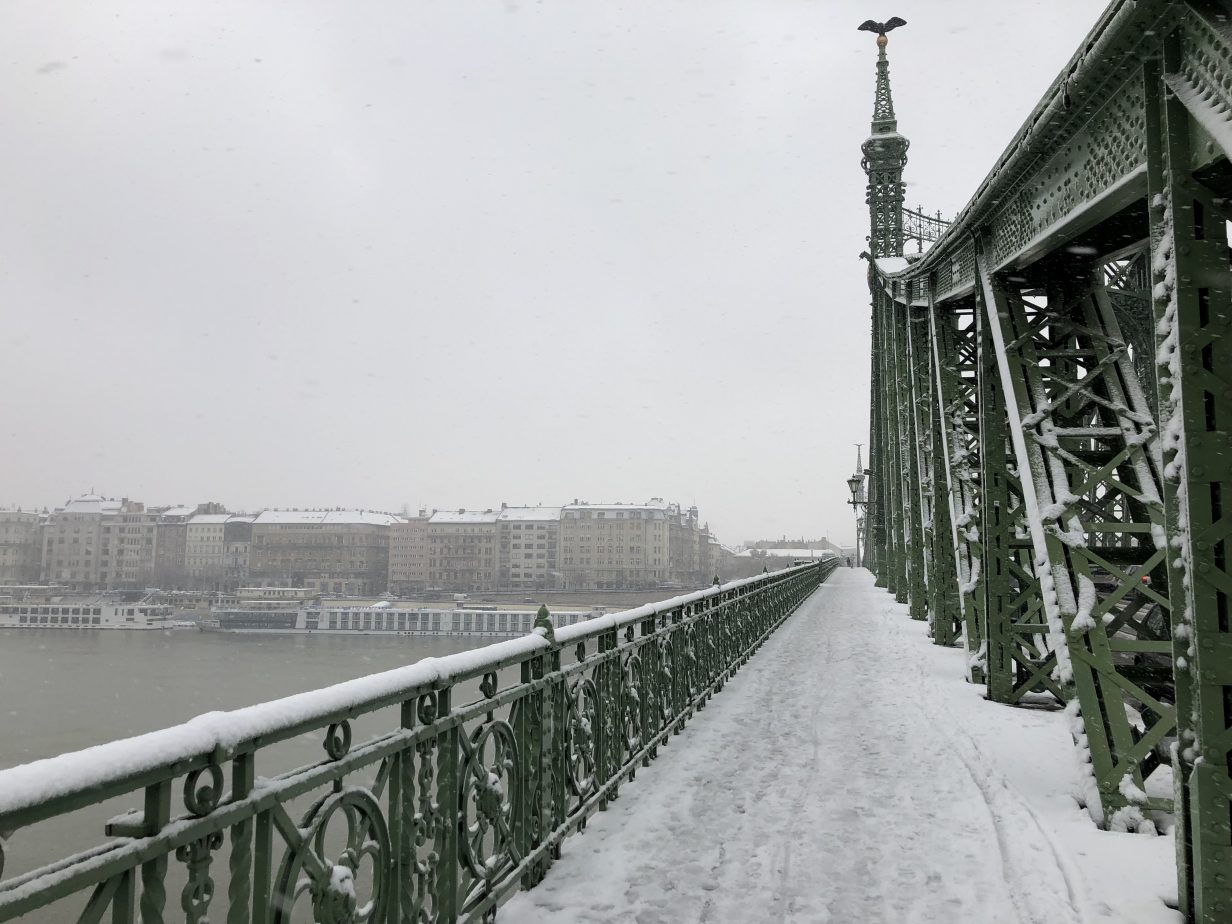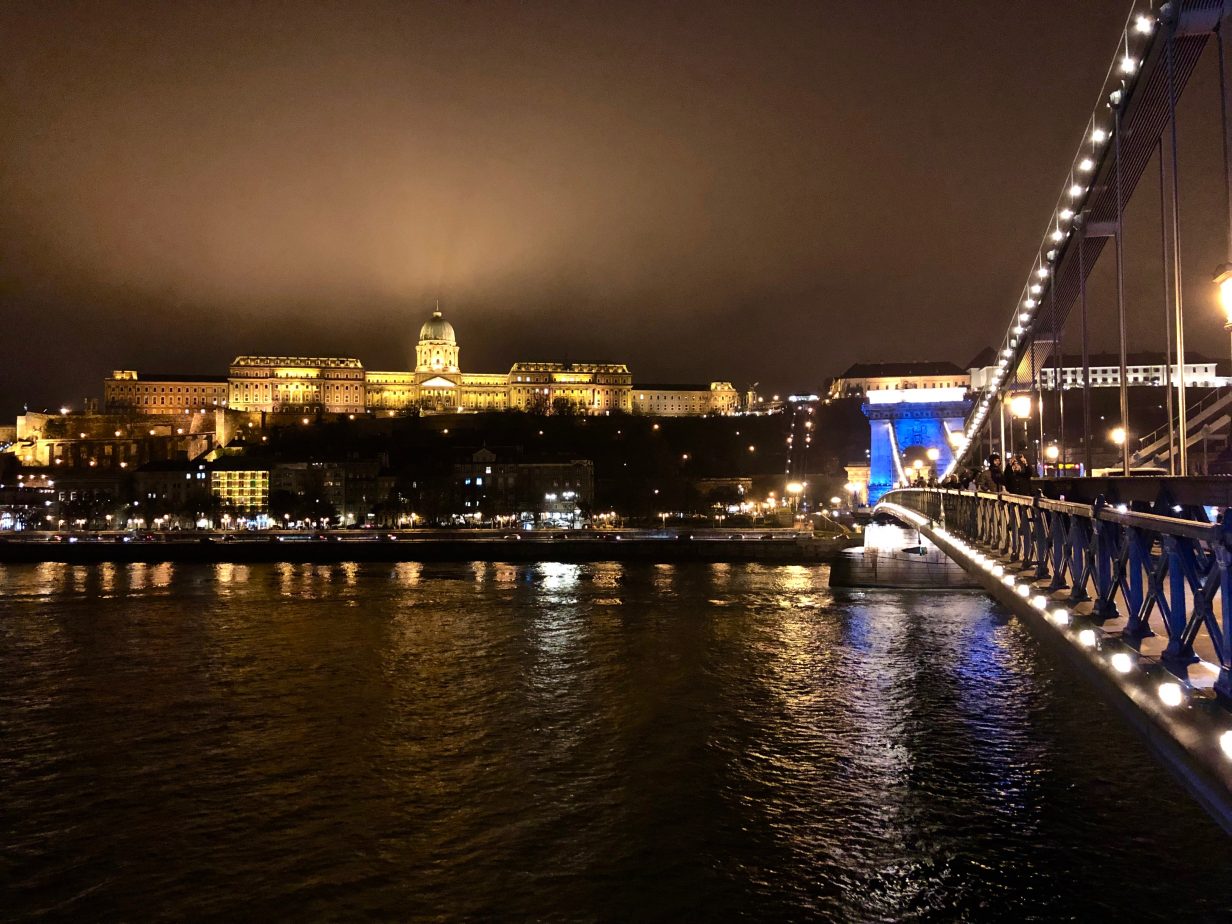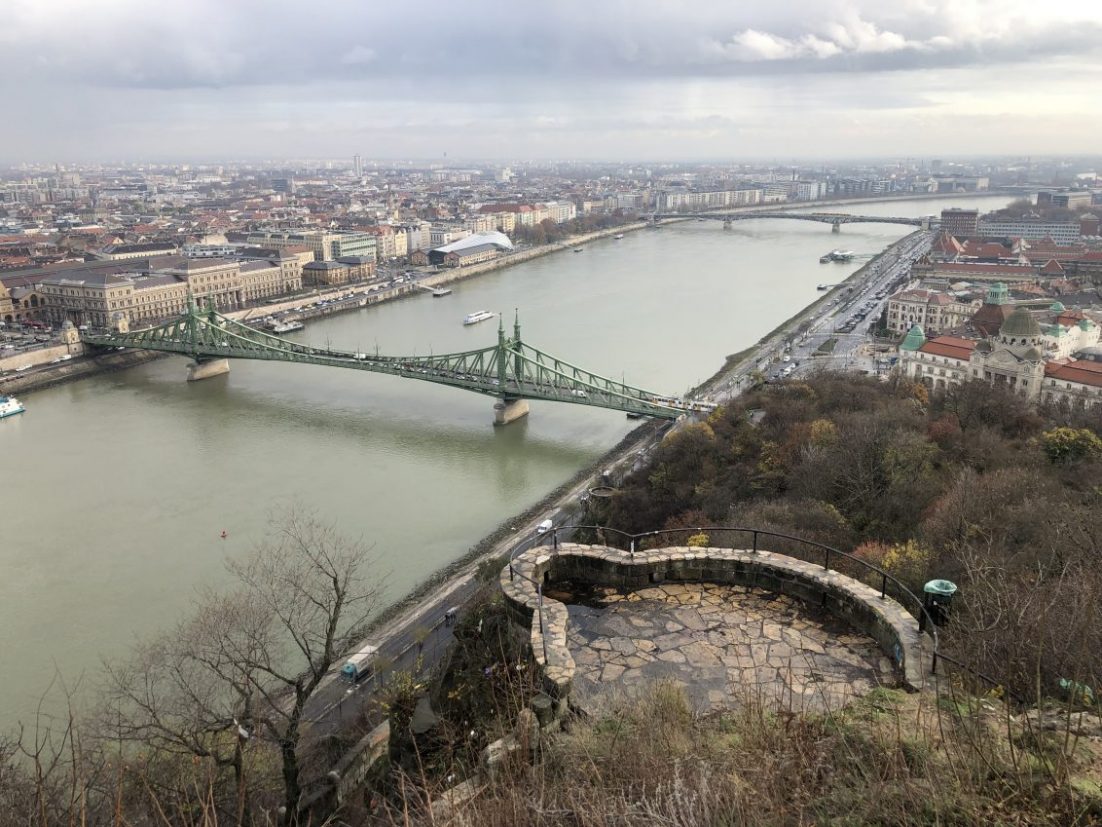
Without the Danube, Budapest would not exist. This river, which is a sort of natural border between Central and Eastern Europe, has set the rhythm and dictated the lives of the people around it. Today, Buda, Obuda and Pest, the three cities that used to look at each other, are united in one single city. And a dozen bridges across the Danube connect the two sides of Budapest.
The bridges of Budapest
1. The Chain Bridge

This bridge, which measures between 375 and 380 metres in length – depending on the elements, is the oldest in the beautiful Hungarian capital. It all began in 1832 with the creation of an association by Count Szechenyi, who wanted to bring everyone on board. Indeed many people, including the boatmen, had no interest in building a bridge. The tale thus wishes to convince and federate public opinion around it. The chain bridge was built between 1839 and 1849.

2. The Liberty Bridge, Budapest’s most beautiful bridge (Szabadsag hid)

This bridge is one of the oldest and probably one of the most beautiful bridges in Budapest. The bridge is 336.6 metres long and 20 metres wide and is a steel bridge across the Danube between Gellért and the Great Halls of Budapest.
3. The Elisabeth Bridge
This suspension bridge in the city centre of Budapest is 378.6 metres long and 27 metres wide. The bridge was built in 1964.
It should be noted that this bridge has had two significant problems. The first is financing. The width of the bridge was reduced due to issues of lack of funds. Then tram traffic was stopped, and the rails were removed from the bridge. In the early 1970s, during control inspections, cracks were noticed on the structure of the Elisabeth Bridge. It was necessary to lighten the system and thus stop the rail (tramway) traffic.
4. The Arpad Bridge
With a length of 981 metres, the Arpad Bridge is located in the south of the city, far from the city centre. It is nevertheless 44 metres wide and has wide pedestrian walkways, tramway lanes and two lanes for road traffic.
The bridge was built in 1950 and redesigned in 1984. The construction of the bridge took more than ten years. Construction began in 1939, precisely the year the Second World War broke out. In 1950, Hungary was in the Eastern bloc, so the bridge was named Stalin’s Bridge. In 1958 it was renamed Arpad in homage to the Prince of the Magyars.
5. Petöfi Bridge (former Miklos Horthy Bridge)
This massive bridge dates from 1937, it is 378 metres long and 25.6 metres wide. It connects boroughs 5 and 11.
It was named Petofi Bridge in honour of the Hungarian poet Sandor Petöfi.
6. Rakoczi Bridge (formerly Lagymanyos Bridge)
Rakocki Bridge is 495 metres long and was built at the end of 1995. It connects Budapest’s districts 9 and 11. It was inaugurated in 1995 and allowed to double a railway bridge.
7. Megyeri Bridge
This gigantic cable-stayed bridge is located in the north of Budapest. It is 1,861 metres long and 35 metres wide. The maximum height of the bridge pier is 99.68 metres.
The M0 motorway runs over this bridge in the north of Budapest. It is a relatively recent bridge, as it was built in 2008.
8. The Marguerite Bridge (Margit hid)
This bridge, which dates from 1876, is 607 metres long. This bridge is 25 metres wide. Its construction took almost four years between 1872 and 1876. A French company (Société de Construction des Batignolles) was commissioned to build the bridge.
The bridge connects the second district – the Vizivaros district – to the fifth and thirteenth districts – the Ujilipotvaros and Lipotvaros districts.
photo credits: Yann Vernerie